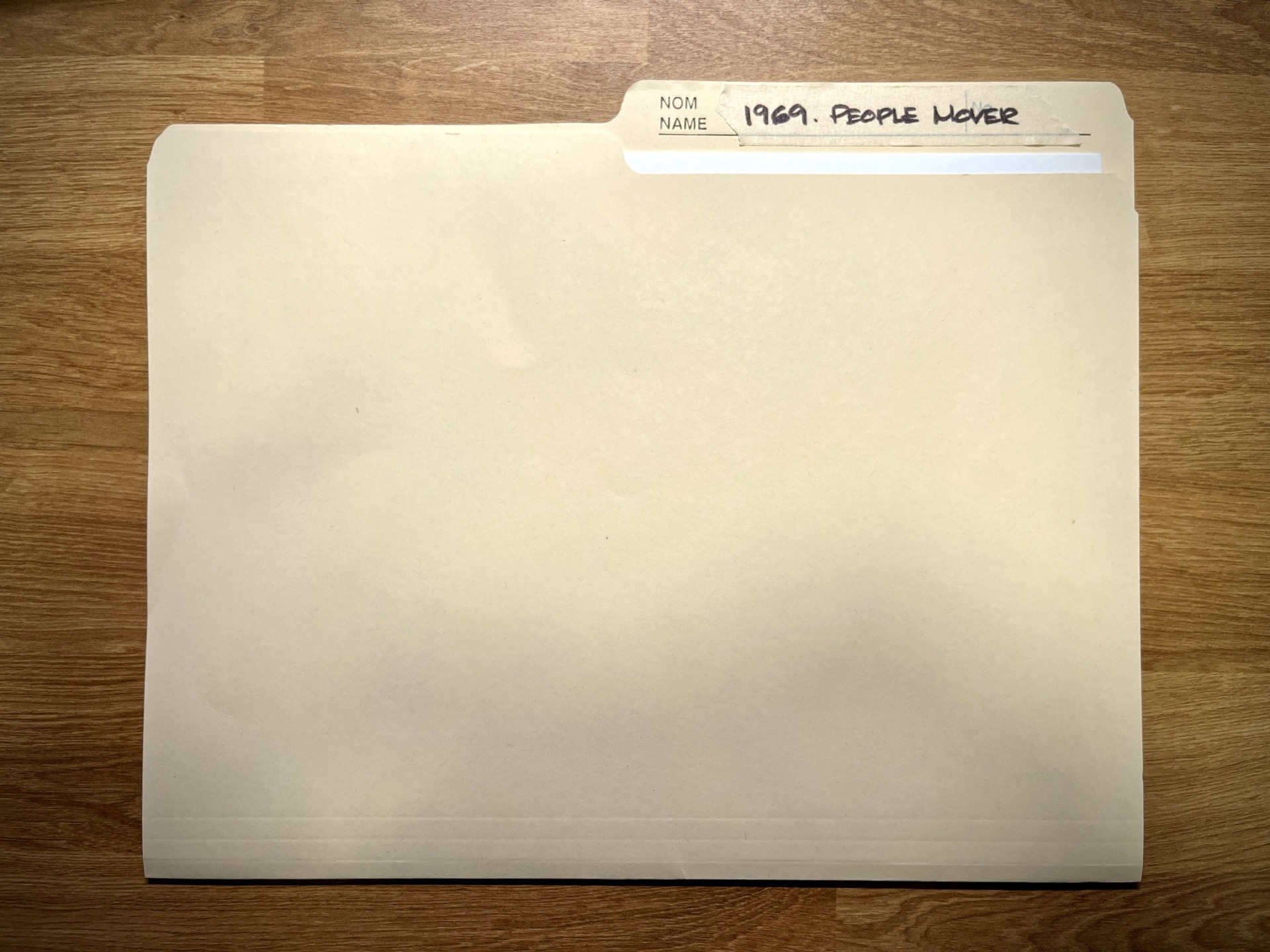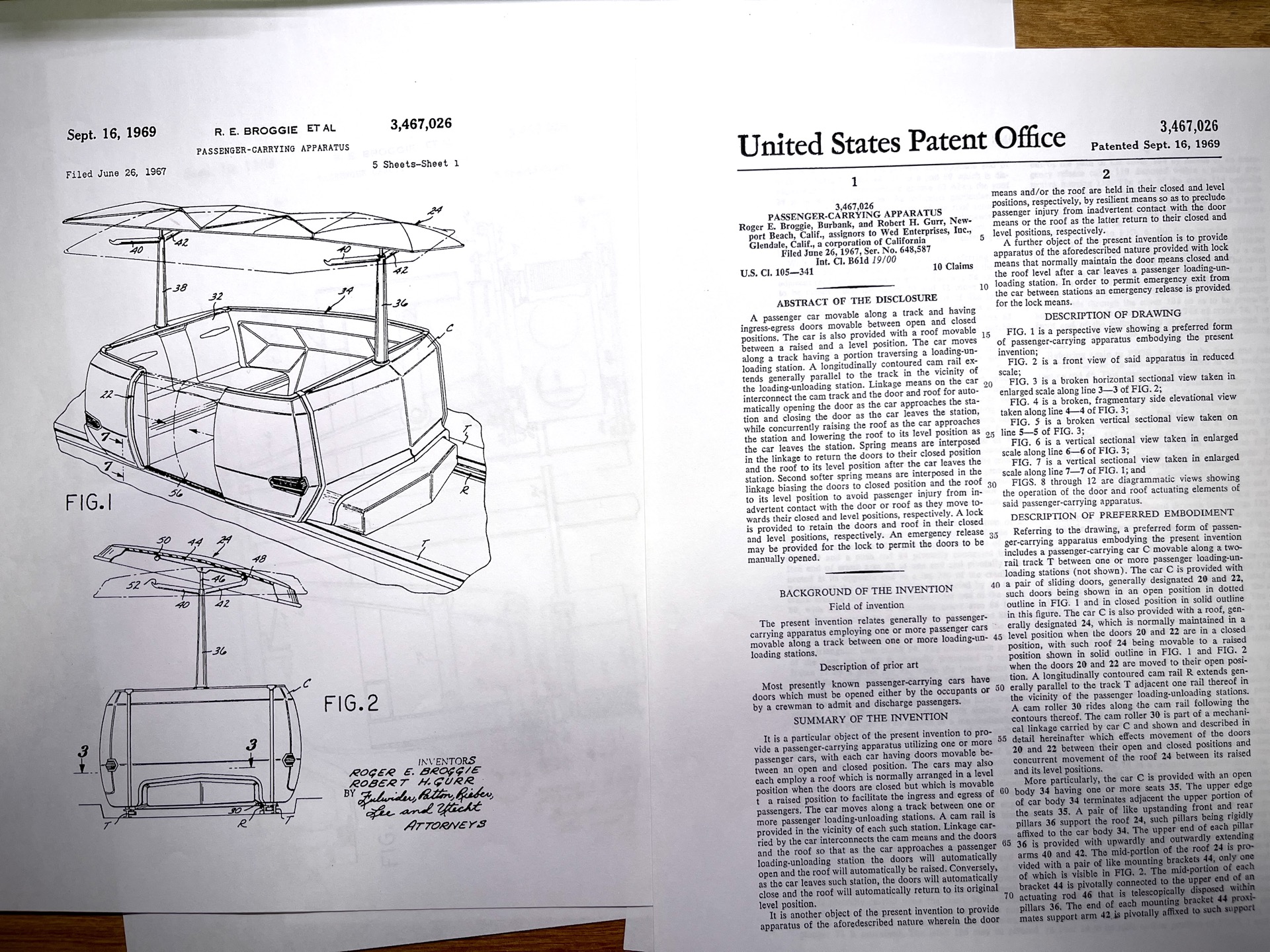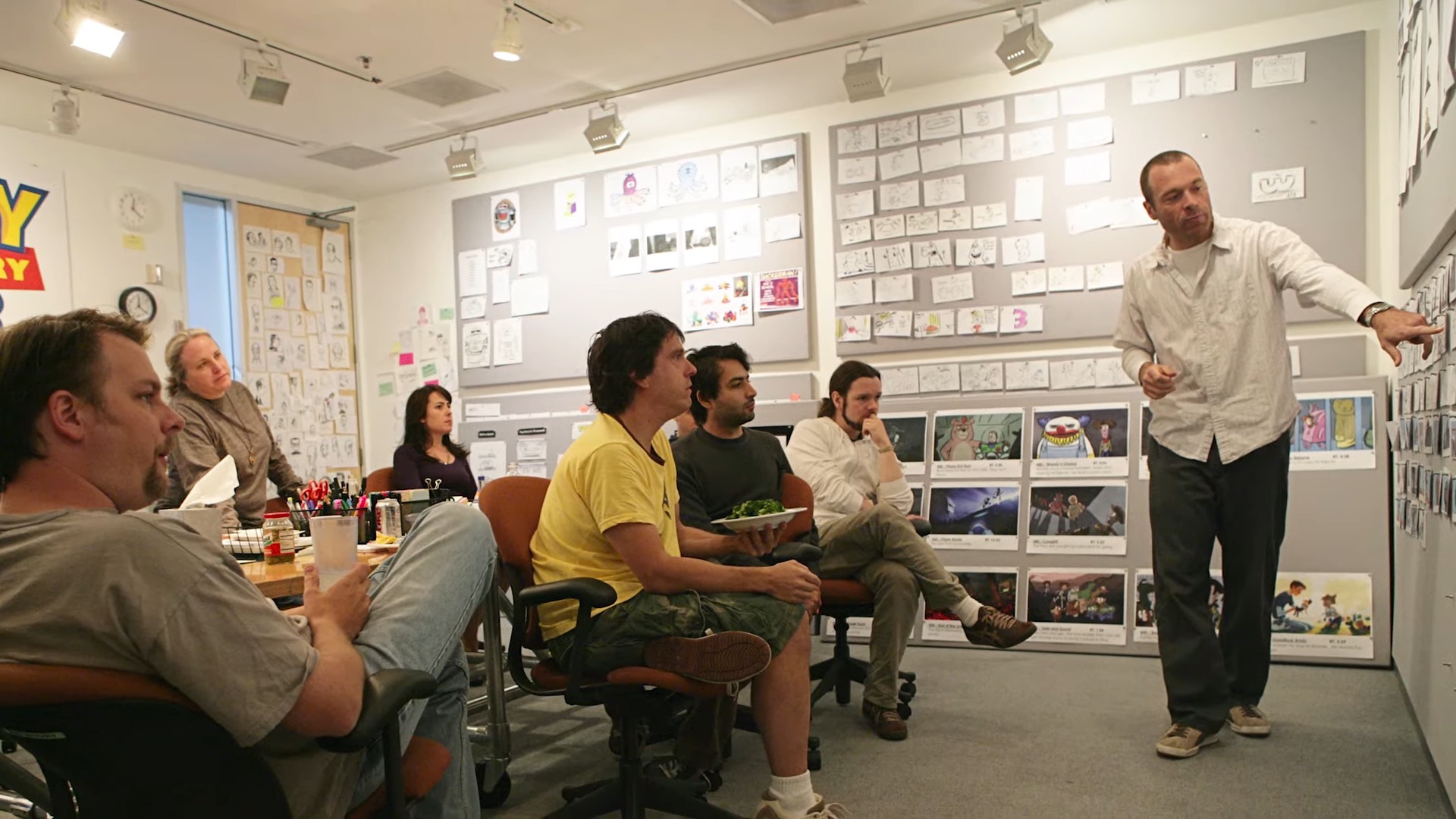January 1st, 2022 — New Year’s Day. Resolution Day One.
My goal: capture and archive physical paper artifacts as reminders of what I’m about.
I had decided to do something I’d never done it before. It was a strange little experiment. Obscure, but interesting.
That day, I stumbled on something unexpected: the 1969 US patents for Disney’s PeopleMover attraction — a ride, that’s not really a ride — in Magic Kingdom, Orlando. One of my favorites!
I didn’t just download the PDF. I printed it.

1969
I wanted to see what it felt like to work through information like this before the age of touchscreens, iPads, and the internet. I didn’t just want to study how the PeopleMover cart was built — I wanted to see how people in 1969 read and navigated something this complex.
And soon, there I was: moving the papers around my desk, laying them out, connecting figure numbers in paragraphs to matching drawings. I noticed my desk had taken on a certain look — a spread of artifacts, a miniature landscape of ideas.
Without thinking about it, I’d built myself a canvas.
That’s when I started paying attention to something I’d never noticed: the tension between the triad of information, real estate, and field of view.
In other words, how much can you see at once? And how much can you understand when you see it all together?

Zoom in / Zoom out
I think I had started to get a sense of this canvas from my experiments on my old iPad. I’d tried the Apple Pencil on iPad plenty of times — the “best of both worlds” promise. But every time, not long after, I’d quit. Why? Because to write clearly, I had to zoom in. Zoom in to write a word, zoom out to see it. Again and again. That’s not flow — it’s the opposite. It’s context-switching with every single word. And when I watched other iPad notetakers, they did the same thing. Giant letters in a tiny viewport.
That experience sat next to my decade-plus of working in digital “infinite canvas” tools — Photoshop, Sketch, Figma — where space is boundless, but the window you work in never really is.
In contrast, the patent papers on my desk didn’t need zoom. I could see everything just by shifting my eyes or tilting my head. I could feel it. Zooming in was as simple as leaning forward. If the desk wasn’t big enough, I’d take it to the floor. My canvas could be as big as the surface allowed.
Workspace
That January day sparked something.
I realized I could understand and connect more information, faster, with physical paper than with any digital setup. Three or four sheets grabbed at random became an instant working surface. A space where I could see patterns emerge, spot gaps, connect dots, and make decisions in seconds.
Because the canvas isn’t just where the work lives — it’s a thinking partner. Its physicality changes how your brain scans, sorts, and sees patterns.
If the canvas is too small, the picture will be too small. If your field of view is cramped, your thinking will be cramped. Sometimes the fastest way to think bigger… is to literally give yourself more room.
And when I thought about it, the same thing happens in so many places:
Storyboards pinned across an animation studio wall. Schedules and triage charts covering a nurse station. Order sheets and Kanban boards lined up in a factory.

And yes, even in tech — those rare, electric meetings around an 8×4’ whiteboard, where someone’s scribbling and everyone else is leaning in, pointing, and nodding.
If it’s good enough for those rooms, it’s good enough for my desk.
Because the size of your canvas is the size of your possible.
If you can’t see it, you can’t think it. If you can’t think it, you can’t build it.
Workflow
That day’s “obscure experiment” became a permanent part of how I work. My desk is now an ever-growing collection of physical papers, ready to spread and rearrange. A living, breathing canvas.
And here’s the thing: this wasn’t about nostalgia for paper. It was about noticing how I work best — and letting that guide me, instead of chasing what’s newest (or neatest). To remember it’s about technique over tools. Because if your tool forces you to work against your brain’s natural way of processing, you’re paying a tax every day — in speed, in clarity, in energy.
If a physical canvas lets me see and think better, I’m going to use it. And if your best work happens sprawled across sticky notes, or on a wall of sketches, or in a single-page notebook — that’s worth paying attention to.
Sometimes the most powerful workflow isn’t the one you’re told to use. It’s the one you notice when you’re too deep in the work to realize you’ve built it. Sometimes you have to ignore “best practices” when they’re not your best practice.
For me, it was a not-very-new workflow — revealed that January day I printed and examined the plans for one of my favorite rides at Walt Disney World. And I’ve been working that way ever since.
